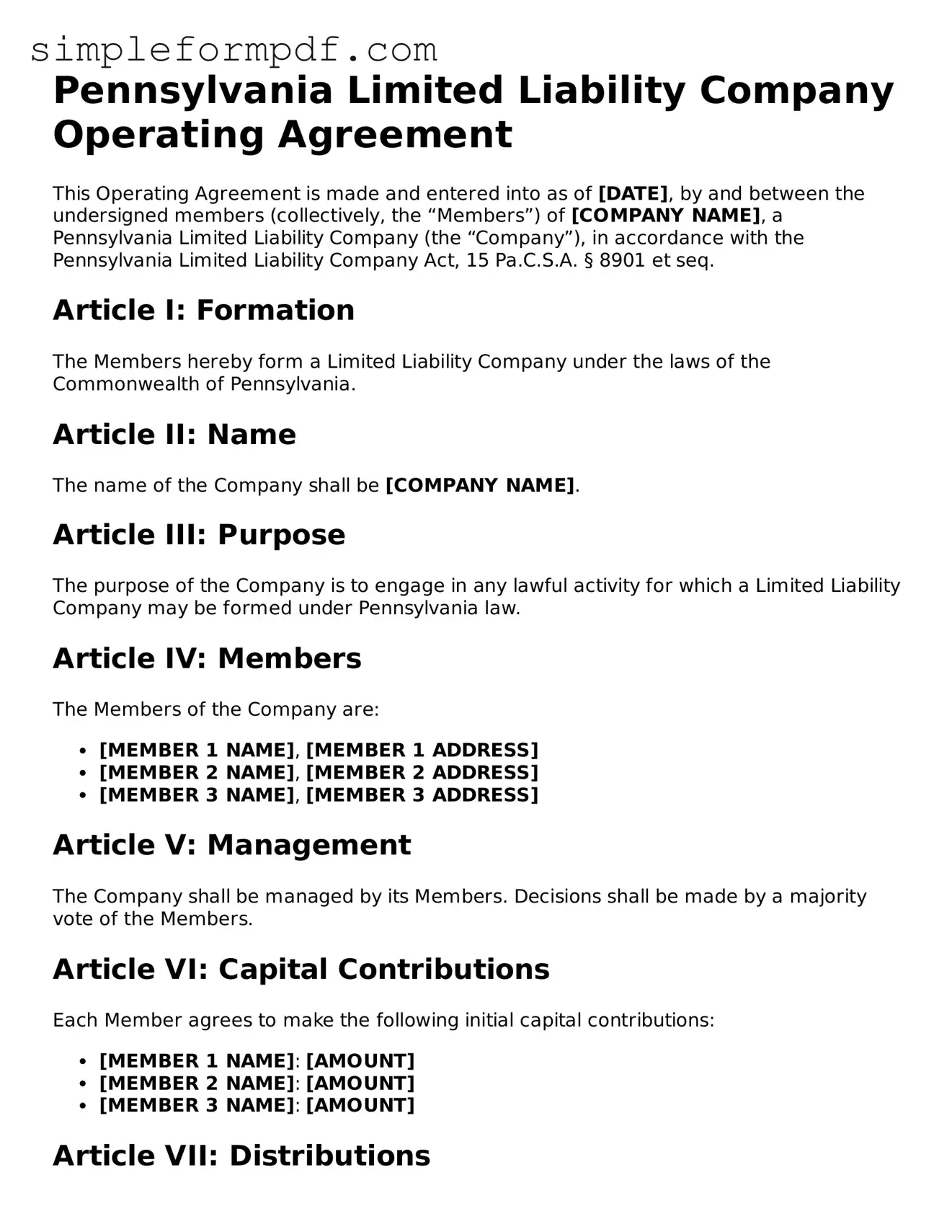Pennsylvania Limited Liability Company Operating Agreement
This Operating Agreement is made and entered into as of [DATE], by and between the undersigned members (collectively, the “Members”) of [COMPANY NAME], a Pennsylvania Limited Liability Company (the “Company”), in accordance with the Pennsylvania Limited Liability Company Act, 15 Pa.C.S.A. § 8901 et seq.
Article I: Formation
The Members hereby form a Limited Liability Company under the laws of the Commonwealth of Pennsylvania.
Article II: Name
The name of the Company shall be [COMPANY NAME].
Article III: Purpose
The purpose of the Company is to engage in any lawful activity for which a Limited Liability Company may be formed under Pennsylvania law.
Article IV: Members
The Members of the Company are:
- [MEMBER 1 NAME], [MEMBER 1 ADDRESS]
- [MEMBER 2 NAME], [MEMBER 2 ADDRESS]
- [MEMBER 3 NAME], [MEMBER 3 ADDRESS]
Article V: Management
The Company shall be managed by its Members. Decisions shall be made by a majority vote of the Members.
Article VI: Capital Contributions
Each Member agrees to make the following initial capital contributions:
- [MEMBER 1 NAME]: [AMOUNT]
- [MEMBER 2 NAME]: [AMOUNT]
- [MEMBER 3 NAME]: [AMOUNT]
Article VII: Distributions
Distributions shall be made to the Members based on their percentage of ownership in the Company.
Article VIII: Books and Records
The Company shall maintain complete and accurate books and records of its business and affairs. Members shall have access to such books at all reasonable times.
Article IX: Amendment
This Operating Agreement may be amended only by a written agreement signed by all Members.
Article X: Governing Law
This Agreement shall be governed by and construed in accordance with the laws of the Commonwealth of Pennsylvania.
IN WITNESS WHEREOF
the Members have executed this Operating Agreement as of the date first above written.
- _________________________ [MEMBER 1 NAME]
- _________________________ [MEMBER 2 NAME]
- _________________________ [MEMBER 3 NAME]
